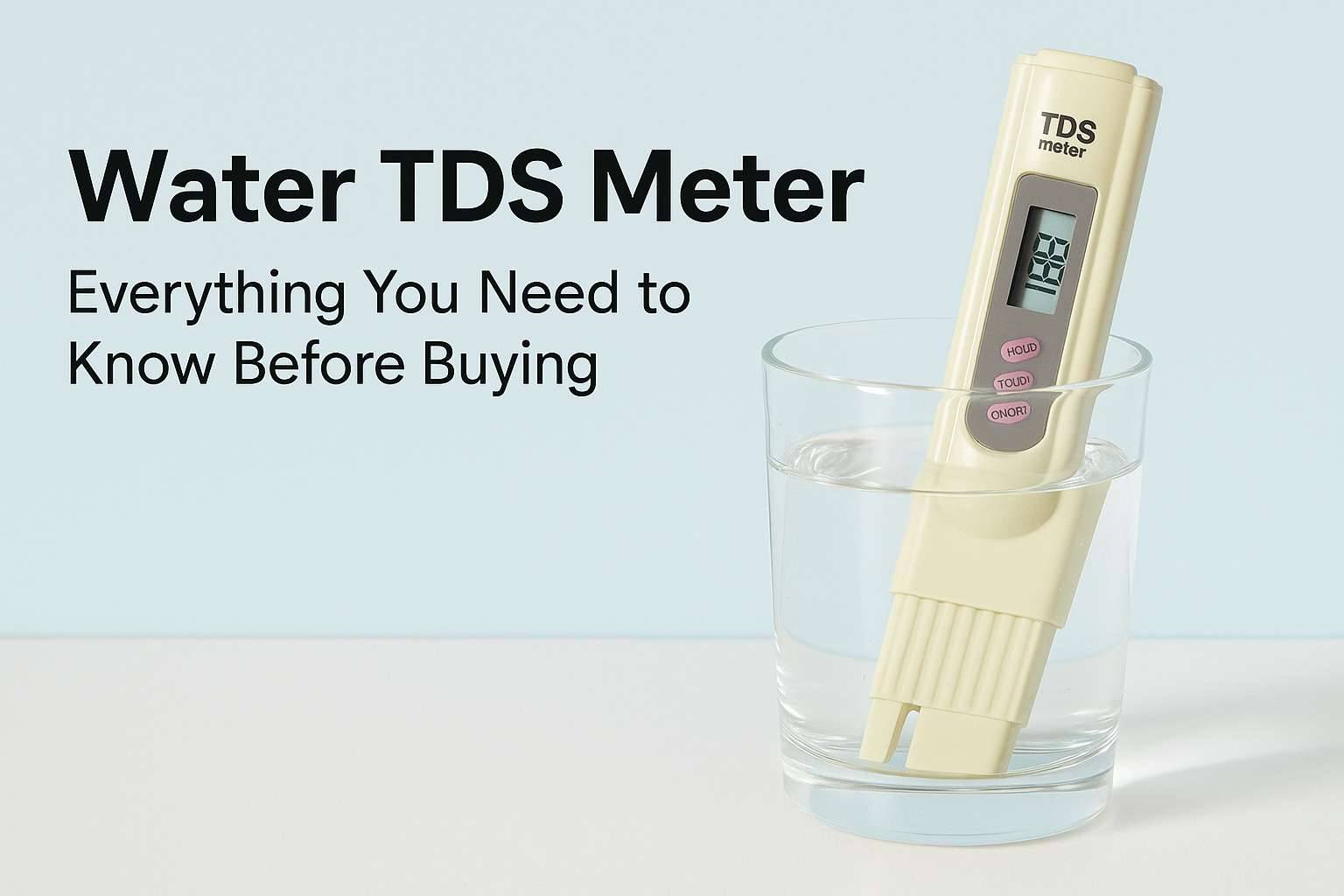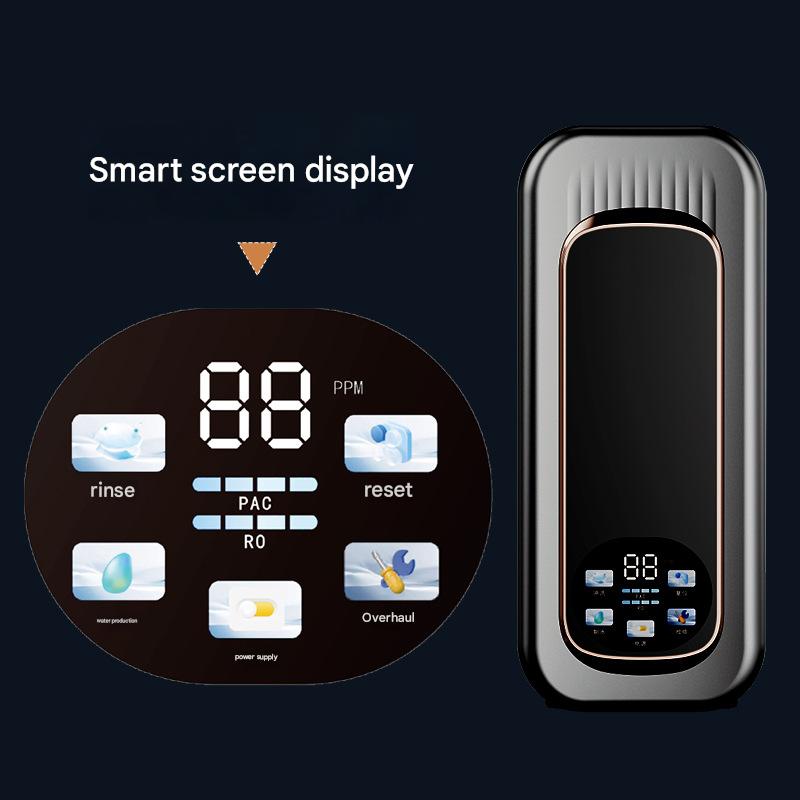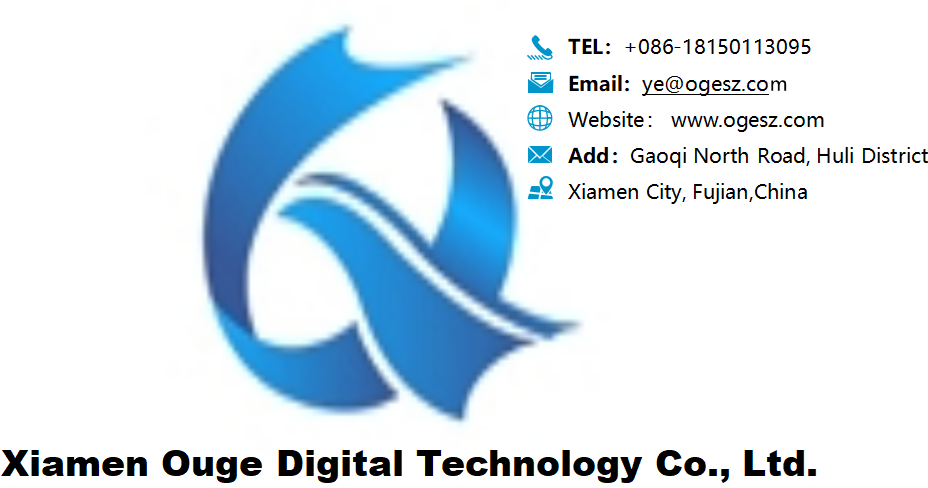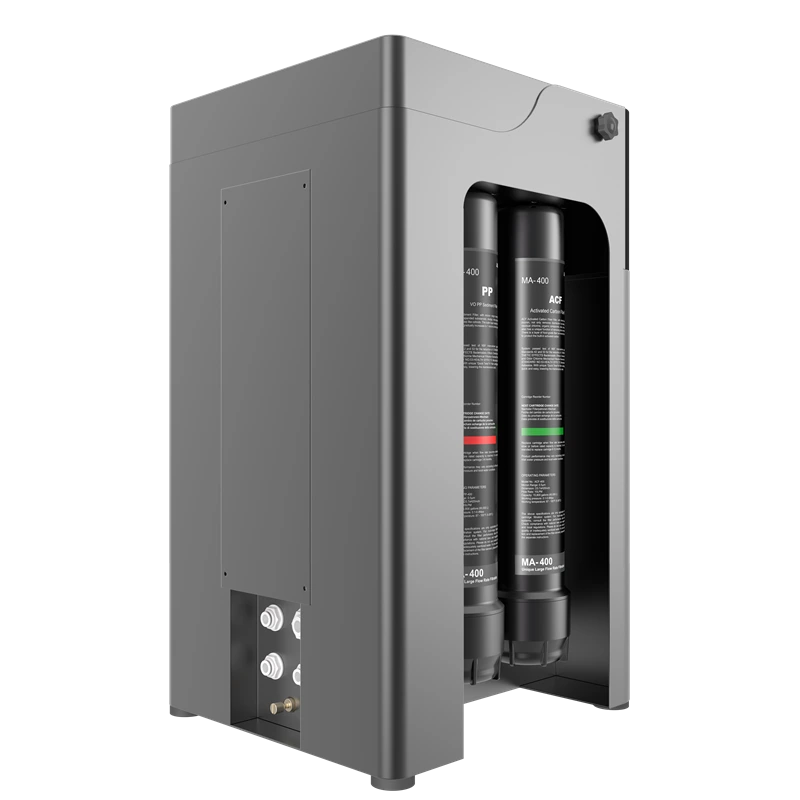When it comes to water purifiers, most people picture rows of shiny machines in stores, with salespeople gesturing while spouting seemingly complex terms like RO membranes, activated carbon, and TDS values. To the uninitiated, it sounds incredibly professional but is utterly incomprehensible. As a result, many either buy whatever the salesperson pushes or simply give up, thinking tap water is good enough. But it doesn't have to be this way. Water purifiers aren't mysterious, unattainable gadgets. Learn a few basics, and you'll easily see through the marketing hype. Choosing one becomes as simple and enjoyable as shopping at the supermarket.

Many people care about water purifiers but find the selection process daunting, mainly because the technical jargon leaves them feeling uncertain. Once you grasp a few key terms, you'll discover it's not as complicated as it seems—it can even be quite interesting, like solving a little puzzle. Once you understand the ins and outs, buying a machine becomes a pleasant experience.
Stepping into the world of water purifiers, the most common term you'll encounter is RO membrane—a name virtually every high-end purifier loves to tout. RO stands for reverse osmosis. Simply put, it uses an extremely fine filtration membrane to trap most invisible impurities in water—not even a grain of salt escapes. Pretty powerful, right? But don't just focus on its strength; it has a minor drawback. It filters so thoroughly that even beneficial minerals get removed, which is why some people find the taste a bit bland.
This brings us to ultrafiltration. Ultrafiltration membranes and RO membranes are like cousins—they share similar principles but aren't as extreme in filtration. Ultrafiltration blocks larger particles and bacteria while allowing some minerals to pass through. This results in water with a bit more flavor, unlike the bland taste of pure water. So, you have to decide what you prefer: pursuing absolute purity or enjoying a more natural taste.
Another frequently mentioned term is activated carbon. It's a staple in most water purifiers, serving a very practical purpose: removing odors and discoloration from water. For instance, that rusty taste from old pipes or the pungent smell of residual chlorine? Activated carbon tackles it effortlessly. Think of it as water's odor-fighting guardian—simple in function, yet absolutely indispensable.
Now let's examine TDS levels, a term that often confuses people. Simply put, TDS measures the total dissolved solids in water—including minerals, salts, and potentially undesirable impurities. You can buy a small meter for a few dozen dollars that measures TDS in seconds. Many people mistakenly believe lower TDS is always better, assuming it means purer water. This isn't entirely accurate—water completely stripped of minerals tastes flat and bland, and long-term consumption may even lead to deficiencies in trace elements.

Beyond these common technical terms, understanding filter lifespan is crucial. Think of a water purifier like a pot in your kitchen—it naturally needs replacing over time, and the filter is the part doing the actual work inside. Different filters last varying lengths: some three months, others six months, and some even a year or two. When buying a purifier, don't just focus on the machine's price; also ask how much each filter replacement costs. Only by calculating the total expense can you truly gauge its cost-effectiveness.
Many people also pay attention to the term “water flow rate” when looking at water purifiers. This simply refers to how much water can flow out per minute. Some machines have extremely slow water flow. If you have a large family, it can be a real pain to fill a pot of water in half an hour. So don't underestimate the importance of water flow rate—it directly determines how comfortable your daily experience is.
Another term you often hear is the wastewater ratio, which refers to the amount of water wasted when the purifier removes impurities. Some models discard three or four cups of wastewater for every cup of purified water—doesn't that sound heartbreaking? Nowadays, upgraded models can achieve a 1:1 ratio or even better water efficiency, which is a real blessing for households facing water shortages.
Next, let's discuss mineral cartridges. These act as the finishing touch in water purifiers, replenishing calcium and magnesium into the filtered water. This prevents the water from tasting too bland, making it closer to natural spring water. Many people who value quality of life appreciate this feature.

Finally, smart monitoring: Many modern purifiers now feature small screens or connect to mobile apps, letting you instantly check filter status, TDS levels, water usage, and more—clear visibility for peace of mind. Compared to older machines where you only knew filters were worn when water quality dropped, this smart approach is far more convenient.
So you see, all those confusing technical terms? Break them down, and they’re not so complicated after all. Once you grasp the core concepts, you can choose based on your needs.
Prioritize water purity? Focus on RO membranes.
Value taste and mineral retention? Consider ultrafiltration.
Concerned about cost and daily convenience? Check filter lifespan and flow rate.
Practical households? Pay special attention to wastewater ratio.
Craving tech features? Explore smart monitoring functions.
Buying a water purifier doesn't have to be intimidating. You don't need to become an expert—just learn a few key terms to quickly see through sales pitches and find the right model for you among the vast array of options. Drinking water is a daily necessity. Choosing wisely brings peace of mind, while choosing poorly wastes money and causes frustration. So why not start today? Use these terms as your keys to turn selecting a water purifier into a fun and smart little challenge.
By now, you've probably realized that those seemingly complex technical terms are like opening a blind box—once you unravel them, you discover they all relate to tangible, everyday needs. Next time you stand before a water purifier display and hear the salesperson spouting RO and TDS, chances are you'll understand the technology better than they do. That sense of effortless mastery feels even more satisfying than buying a great machine itself.

 Reverse Osmosis Scaling Right After Startup? Here's What You Need to Know About Prevention and Treatment!
Reverse Osmosis Scaling Right After Startup? Here's What You Need to Know About Prevention and Treatment!
 Reverse Osmosis Scaling Right After Startup? Here's What You Need to Know About Prevention and Treatment!
Reverse Osmosis Scaling Right After Startup? Here's What You Need to Know About Prevention and Treatment!
 Three Certain Trends in Commercial Water Purification Over the Next Five Years
Three Certain Trends in Commercial Water Purification Over the Next Five Years
 Eight Different Methods for Pure Water Treatment Equipment Processes
Eight Different Methods for Pure Water Treatment Equipment Processes